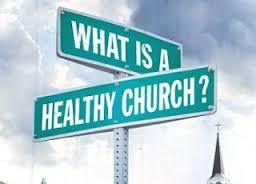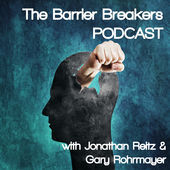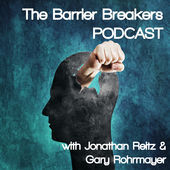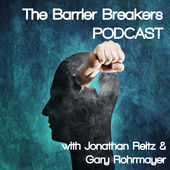Gary Rohrmayer's Blog, page 10
May 7, 2015
3 Benefits for Taking the Natural Church Development Survey
May is “Church Health Month” around here at Converge MidAmerica. It is a season in our calendar where we encourage churches to take a close look at both the quality and the quantity of their church’s ministry through taking the Natural Church Development Survey. Here are a few quick reasons for you and your church to embrace this church health process.
1) It is based on the most comprehensive church health research ever done.
Over 90,000 churches have completed NCD surveys around the world. Over 47,000 churches have completed NCD surveys in the USA. Dave Wetzler the USA Director of Natural Church Develop reports that when churches have completed 3 surveys and two full cycles of addressing the weak system they have discovered through the process that they see 85% of them improving in quality and quantity both globally and here in the USA.
They have also discovered that churches that plant daughter churches – they have an overall average score of 55 or higher. When a church has a score at 50 (average) or less they are still very inwardly focused on their church, their health, and their ministry programs. Once a church reaches a healthy average of 55 they become more outwardly focused in reaching other segments of the community or multiplying through church planting and mission efforts. Conversion growth increases and church planting increases.
Every time a church takes an NCD Survey it adds to the research and moves us from guessing to assessing.
2) It separates fact from feelings.
So many decisions are based on feelings rather than facts. The NCD survey takes all those feelings that are running through the minds and hearts of your people and quantifies them.
Church Health is measured through hard data as well as soft data. The hard data is the key statistics you track as a church: attendance, offerings, new visitors, members, baptisms, small groups, and leaders. So every church has its own dash board of stats that they are looking at frequently.
The soft data is the quality side of your services and ministries. It is people’s attitudes, feelings and perspectives towards the programs, process and the personnel of the church.
People’s real attitudes, feelings and perspectives are hard to determine at times especially in a church. So how do you get below the surface of what people are thinking and expecting in your community of faith?
The NCD Survey does this in a very positive and detailed way. It gives you an overall morale number for your church and then drills down in revealing what your people feel are the strengths and weaknesses of your church at this time.
3) It provides a focused pathway to strengthen your church.
Once the feelings and perspectives of your people have been quantified, now the church can with laser like precision focus in on the systems within the church that are weak and need some attention.
All too often church leaders are guessing rather than assessing. They are going on a hunch rather than accurate data. This will always lead to a backlash against leadership initiatives and possibly leadership itself.
When you listen to your people’s feedback you honor them and create a deeper level of ownership in the ministry of the church.
Focusing on the feedback of your key leaders helps you develop an annual ministry plan. A plan with clear goals, deadlines and delegated assignments to improve the area your people identified as needing strengthening.
A little focus can make a lasting impact. For example: Developing a 12 month ministry plan that focuses raising the temperature of evangelism throughout every level of the church helps shape the culture and raises the effectiveness of the church.
Additional Resources:
Church Health a Biblical Mandate
Establishing a Church Health Rhythm
Five Reasons for Doing a Natural Church Development Survey
Measuring the Quality of a Church's Health
Church Health Webinars
Related articles
 Church Health is a Serious Issue
Church Health is a Serious Issue Why Do Churches Get Stuck at the 35 Barrier? - Podcast
Why Do Churches Get Stuck at the 35 Barrier? - Podcast Creating Evangelistic Immersion Experiences for Your Disciples
Creating Evangelistic Immersion Experiences for Your Disciples
May 4, 2015
Church Health is a Serious Issue
 We are serious about church health!
We are serious about church health!
Why? Because scripture mandates it.
The Apostle Paul in his letter (actually a field manual) to Titus, who was serving as a regional leader on the island of Crete, charged Titus with the task of strengthening the churches there. He writes, "The reason I left you in Crete was that you might straighten out what was left unfinished..." Titus 1:5. Some commentators say that Titus was working with 100 churches or more on the island of Crete during his time there.
The phrase 'straighten out' (NIV) - occurs nowhere else in the New Testament. "It means, properly, to make straight upon, and then to put further to rights, to arrange further." (Robinson)
"'Set in order' (NASB) is an interesting Greek word, epidiorthoo. The first two, epiand dio are prepositions. The word orthoo is the word from which we get orthodontics, orthopedics and all of those mean straightening. When you go to the orthodontist, he straightens your teeth. When you go to the orthopedist, he straightens your bones. That's what that means. So what he is saying intensified by two prepositions is 'thoroughly and completely and fully straighten out what still isn't straight.' In ancient times that word was used by secular medical writers for the setting of bones or the straightening of bent limbs. So he says I want you to completely set things straight." (MacArthur)
Titus' commission was to establish and reestablish the foundations of the church in Crete for the purpose of seeing gospel centered churches missionally engaged.
How was Titus to strengthen the churches on the island of Crete?
Appoint leaders in every town (Titus 1:5-16).
He was to set forth the qualifications of healthy leaders (vs 5-9) and to deal decisively with the unhealthy ones (vs10-16).
Teach sound doctrine throughout the church (Titus 2:1-15).
He was to promote healthy thinking as well as healthy living (vs 1-10) which is found in the power and motivation of the gospel (vs 11-14).
Remind the people how to live out the gospel in this world (Titus 3:1-14).
He reminds them to "be ready to do good" (vs 2); to "be careful to devote themselves to doing what is good" (vs8) and "to learn to devote themselves to doing what is good" (vs 14).
In light of this scriptural foundation church health is a serious issue.
So what is a healthy church?
It is led by healthy leaders who are examples to follow.
It deals with rebellion quickly and courageously.
It promotes sound doctrine (Healthy Orthodoxy and Othropraxis).
It is inter-generational and branches beyond social structures.
It promotes the centrality of the gospel as the fuel for sanctification and mission.
It does not talk about mission it fulfills the mission of God.
One of our core convictions is that no leader should lead alone. I believe this also translates onto a corporate level that no church should attempt to achieve that mission alone. Our desire is to walk along side of churches to be a voice of encouragement, a coach to call out the best in them and a friend to lean on.
We are committed to starting and strengthening churches.
Reflective Questions:
How are you measuring the health of your church?
Do you know how to establish an annual church health rhythm?
How do you gather the opinions, feelings and attitudes of your people in a constructive way?
How do you use your annual ministry plan to improve the quality of your ministry?
Who do you trust to help you in evaluating the health of your church?
Related Resources
May is Church Health Month
Measuring the Quality of Your Church's Ministry
Church Health By the Numbers
5 Reason to Embrace Natural Church Development - Part 1
5 Reason to Embrace Natural Church Development - Part 2
April 18, 2015
Why Do Churches Get Stuck at the 35 Barrier? - Podcast
 There are thousand upon thousands churches stuck at the 35 growth barrier.
There are thousand upon thousands churches stuck at the 35 growth barrier.
In this episode, Jonathan Reitz & Gary Rohrmayer dig into what's REALLY going on when your church gets to the 35 barrier.
This is where your church really starts to take shape and where your leadership will have to factor in some surprising insights. You might even have to change the way you lead to put this barrier behind you!
New Podcast Episode
Get the Complete Series on iTunes
Related articles
 Why Do Churches Get Stuck at the 65 Barrier? - Podcast
Why Do Churches Get Stuck at the 65 Barrier? - Podcast Understanding Why Churches Get Stuck at the 125 Growth Barrier - Podcast
Understanding Why Churches Get Stuck at the 125 Growth Barrier - Podcast
April 17, 2015
How to Break the 125 Growth Barrier - Podcast
In this episode of the Barrier Breakers Podcast, Jonathan Reitz & Gary Rohrmayer explore the leadership skills you and your team need to break the 125 barrier. You will learn:
How to build systems that help your leadership move to new levels.
How to lead in ways that people respect and follow.
How the relational dynamics in your chuch will begin to shift as the congregation gets larger.
The Barrier Breakers Podcast will equip you to be the kind of leader that accelerates and gains focus as you target your efforts on at the 125 barrier!
New Podcast Episode
Find the complete series on iTunes
Related articles
 Why Do Churches Get Stuck at the 35 Barrier? - Podcast
Why Do Churches Get Stuck at the 35 Barrier? - Podcast How to Break the 35 Growth Barrier - Podcast
How to Break the 35 Growth Barrier - Podcast Why Do Churches Get Stuck at the 65 Barrier? - Podcast
Why Do Churches Get Stuck at the 65 Barrier? - Podcast
April 16, 2015
Understanding Why Churches Get Stuck at the 125 Growth Barrier - Podcast
In this episode of the Barrier Breakers Podcast, Jonathan Reitz & Gary Rohrmayer unpack the reasons why your church gets stuck on the 125 barrier.
You will learn:
How to build systems that help your leadership move to new levels.
Who you need to grow your church beyond 125.
What specific steps you can take to get a full vision for what's possible.
The Barrier Breakers Podcast wil challenge you to get a God-sized vision for your church (and your leaders) as you understand the specific challenge you face at 125!
New Podcast Episode
Get the Complete Series on iTunes
Related articles
 Why Do Churches Get Stuck at the 35 Barrier? - Podcast
Why Do Churches Get Stuck at the 35 Barrier? - Podcast Why Do Churches Get Stuck at the 65 Barrier? - Podcast
Why Do Churches Get Stuck at the 65 Barrier? - Podcast
April 15, 2015
How to Break the 65 Growth Barrier - Podcast
In this episode of the breaking barriers podcast, Jonathan Reitz and Gary Rohrmayer the skills need to overcome the 65 Barrier.
This barrier is the first really frustrating barrier for most church planters, because it’s not about them. Well, it IS about them, but it’s also not.
Find out what you can do to get your mind around this frustrating barrier in this episode of the Barrier Breakers Podcast.
New Podcast Episode
Listen to the Complete Series on iTunes
Related articles
 How to Break the 35 Growth Barrier - Podcast
How to Break the 35 Growth Barrier - Podcast Why Do Churches Get Stuck at the 65 Barrier? - Podcast
Why Do Churches Get Stuck at the 65 Barrier? - Podcast How to Break the 125 Growth Barrier - Podcast
How to Break the 125 Growth Barrier - Podcast
Why Do Churches Get Stuck at the 65 Barrier? - Podcast
 In this episode of the breaking barriers podcast, Jonathan Reitz and Gary Rohrmayer dive into the 65 Barrier.
In this episode of the breaking barriers podcast, Jonathan Reitz and Gary Rohrmayer dive into the 65 Barrier.
This barrier is the first really frustrating barrier for most church planters, because it’s not about them. Well, it IS about them, but it’s also not.
Find out what you can do to get your mind around this frustrating barrier in this episode of the Barrier Breakers Podcast.
New Podcast Episode
Listen to the Complete Series on iTunes
Related articles
 How to Break the 35 Growth Barrier - Podcast
How to Break the 35 Growth Barrier - Podcast How to Break the 125 Growth Barrier - Podcast
How to Break the 125 Growth Barrier - Podcast
April 14, 2015
Creating Evangelistic Immersion Experiences for Your Disciples
 When it comes to equipping your church to be actively engaged in evangelism many start with a class or a seminar because that is the way we were taught. It is not that I am against classroom education or equipping seminars, I just believe that these trainings should come after one's heart has been captured through positive experiences. Providing your people with positive, low risk experiences that build on each other is one of the best ways to design your equipping strategy.
When it comes to equipping your church to be actively engaged in evangelism many start with a class or a seminar because that is the way we were taught. It is not that I am against classroom education or equipping seminars, I just believe that these trainings should come after one's heart has been captured through positive experiences. Providing your people with positive, low risk experiences that build on each other is one of the best ways to design your equipping strategy.
What entry level evangelistic opportunities will you provide your church? Here are a couple of ideas to start with:
1. Prayer Walking: In equipping people for evangelism I would start by offering specific opportunities for individuals to talk to God first about their community rather than teaching them to talk to their community about God. Prayer is a mystery but prayer walking is even more mysterious. I don't completely understand why prayer walking works but I know it works. I have seen its impact on communities and impact on participants. Here is a free prayer walking workbook. (Download Here.pdf)
2. Community Service: There is an ever widening chasm between the church and our culture. Churches that have an outreach orientation seek ways to build bridges over the chasm through simply serving their communities. Robert Lewis in his book The Church of Irresistible Influence writes, "The church is to be in the bridge-building business, according to the design of Jesus Christ. Over this bridge the church must travel and prove its reality to a disbelieving world." He continues, "Our world must experience the same incarnational influence as the first century experienced when Grace and Truth himself suddenly bridged that Great Chasm and became flesh.” (pg. 30) Mobilizing your people to love their community through acts of service is another way to engage their hearts for outreach in a positive way. Download a free Summary: The Church of Irresistible Influence.pdf
3. Servant Evangelism: Steve Sjogren's motto is, "Small Things Done with Great Love Are Changing the World." Servant Evangelism goes beyond community service in that it uses an act of random kindness to earn the right to give a person a connection card. The connection card is key to the process in that it gives a positive message coupled with specific information about the church that is blessing them that day. Servant Evangelism seeks to win the heart before it confronts the mind. A small act of kindness nudges a person closer to God, often in a profound way, as it bypasses ones mental defenses. The average Christ-follower is willing to hand a stranger a can of cold Coke on a hot day (low risk). The high grace is seen in the typical reaction. "Oh, thank you!" "This is so nice!" "I can't believe this is for free!" And, "Why are you doing this?" Kindness builds the bridge for the person to receive a touch of love from God. It's simple, practical, effective, inexpensive and fun! (HT:Servant Evangelism) Giving your people fun, positive and meaningful opportunities to share God's love with their community will lift them to a whole new level of evangelistic commitment.
4. Investing and inviting: Statistics show that one out of four adults in the United States will go to church if someone invites them. (Marketing the Church, George Barna, pg 111) Equip your people on how to relationally invest in the lives of their neighbors, friends and co-workers, along with helping them recognize the opportunities to invite them to what Rich Richardson calls ‘soul-awaking events’. Soul-awaking events are opportunities to "…awaken people to the existence of their soul. These events get people in touch with their spiritual needs and longings. These events do not call people to conversion. A quick call to conversion is not good stewardship to people who are still a long way from God. It turns them off. It pushes them away….I am convinced that high quality soul-awaking events are the greatest missing link in evangelism today. I am also convinced that high-quality soul-awaking events will be the most controversial part of what vibrant evangelistic ministries do." (Evangelism Out of the Box, pg 76) Figuring out what your people will invite their friends to is a trail and error proposition. This is a place where you are to take risks and push it to the edge. What does a risky 'soul-awaking event' look like in your small groups, affinity events and worship gatherings?
Questions to ponder:
When is the last time you took your church out on a prayer walk?
When was the last time your church demonstrated the unconditional love of Christ to your community?
What would stop your church from implementing a servant evangelism strategy?
What would be the "soul-awaking events" in the life of your church?





